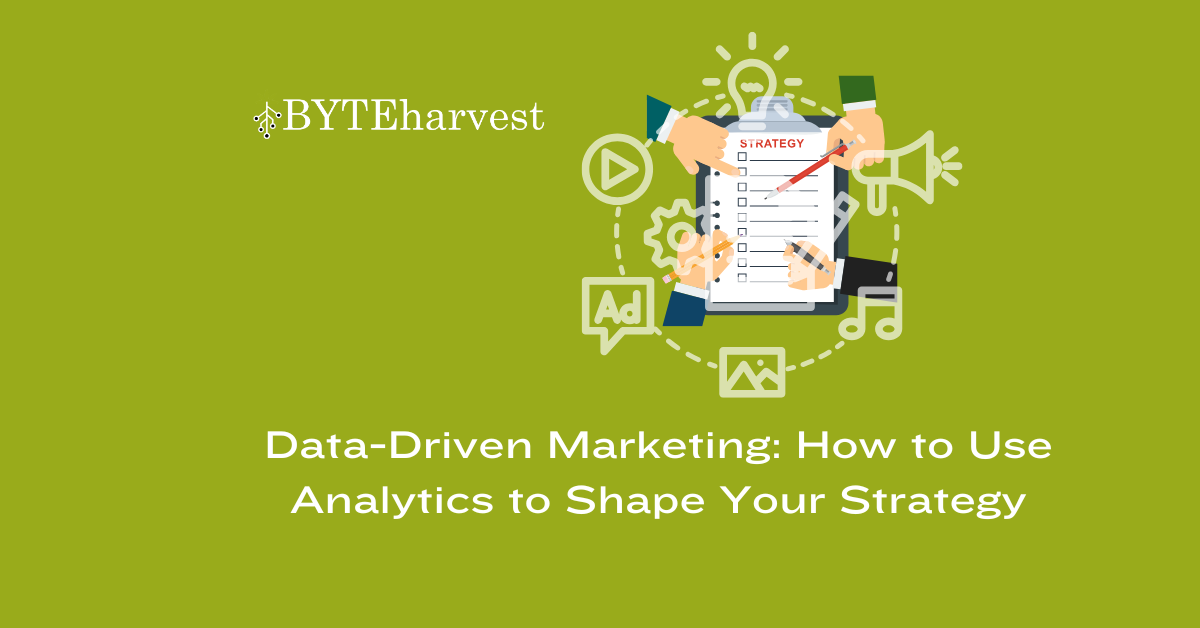Introduction
In today’s digital age, marketing has undergone a revolutionary transformation from traditional intuition-based approaches to data-driven decision-making, emphasizing the importance of data protection. Data-driven marketing represents a fundamental shift in how businesses connect with their customers, leveraging vast amounts of data and sophisticated analytics tools to inform and optimize marketing strategies. This evolution has been driven by the exponential growth in available customer data, advanced analytics capabilities, and the increasing need for marketing accountability in traditional marketing practices.
The current marketing analytics landscape is characterized by an intricate ecosystem of tools, platforms, and methodologies that enable marketers to gather, analyze, and act upon customer data in real-time. As organizations strive to remain competitive, the ability to harness data analytics has become not just an advantage but a necessity for marketing success

Understanding Data-Driven Marketing
Benefits of Data-Driven Marketing
Data-driven marketing transforms how businesses approach their marketing efforts by harnessing the power of data-driven insights that drive data-driven decisions. By basing decisions on empirical evidence rather than assumptions, organizations can significantly improve their marketing ROI and operational efficiency through a data-driven approach. This approach enables precise customer targeting through detailed segmentation and personalization, leading to more effective campaigns and better resource allocation.
The cost optimization benefits of data-driven marketing are particularly noteworthy. By analyzing performance data across channels and marketing campaigns, organizations can identify the most efficient marketing investments and eliminate wasteful spending. This systematic approach to budget allocation ensures that marketing resources are directed toward the activities that generate the highest returns on marketing campaigns, helping to optimize their marketing strategies.
Types of Analytics in Marketing
1. Descriptive Analytics
Descriptive analytics forms the foundation of marketing intelligence by providing detailed insights into past performance that can help inform personalized marketing goals. This involves analyzing marketing data to identify patterns and trends in customer behavior, campaign performance, and market dynamics, which are crucial for data-driven strategies. Through performance metrics tracking, the marketing team can understand which campaigns resonated with their audience and which fell short of expectations, informing future marketing decisions and optimizing marketing messages. Campaign effectiveness measurement through descriptive analytics helps establish benchmarks for future initiatives and informs marketing messages.
2. Diagnostic Analytics
Moving beyond what happened, diagnostic analytics focuses on understanding why certain outcomes occurred. This involves sophisticated root cause analysis to determine the factors contributing to campaign success or failure in the marketing data context. By evaluating campaign performance through multiple lenses, the marketing team can identify the specific elements that drive customer engagement and conversion to inform their marketing goals. Customer behavior patterns revealed through diagnostic analytics provide valuable insights for future strategy development.
3. Predictive Analytics
Predictive analytics represents a more advanced application of marketing analytics, using historical data and statistical algorithms to forecast future trends and outcomes. This includes customer behavior prediction, helping marketers use data to anticipate needs and preferences before they’re explicitly expressed. Campaign outcome projection enables organizations to estimate the potential success of marketing initiatives before deployment, allowing for pre-emptive optimization based on data analysis.
4. Prescriptive Analytics
At the most sophisticated level, prescriptive analytics provides specific recommendations for optimizing marketing strategies, guiding marketers to make data-driven decisions. This includes detailed guidance for resource allocation, campaign optimization, and implementing a data-driven marketing strategy for effective marketing campaigns. By combining insights from multiple data sources, prescriptive analytics helps marketers make informed decisions about where to invest their marketing budget for maximum impact.
Essential Marketing Analytics Tools
Digital Analytics Platforms
Modern marketing relies heavily on web analytics tools to track and analyze online customer behavior effectively. Google Analytics stands as a cornerstone tool, providing comprehensive insights into website traffic, user behavior, and conversion patterns to inform your marketing decisions. Social media analytics tools offer detailed metrics about engagement, reach, and audience demographics across various social platforms. Web analytics solutions extend beyond basic traffic metrics to provide deep insights into user experience and behavior, while email marketing platforms offer sophisticated tracking and analysis of campaign performance.
Advanced Analytics Solutions
The evolution of marketing analytics has given rise to increasingly sophisticated tools and platforms. Customer data platforms (CDPs) leverage data from multiple sources to create personalized marketing profiles for digital marketing strategies. Predictive modeling tools leverage machine learning algorithms to forecast customer behavior and campaign outcomes, enhancing how marketers use data to optimize their marketing efforts. Marketing automation systems streamline and optimize marketing processes, while data visualization tools make complex marketing data sets accessible and actionable for data analysts and data scientists.
[Content continues in next section…]
Implementing Data-Driven Marketing Strategies
Data Collection and Management
The foundation of effective data-driven marketing refers to robust data collection and management practices that ensure actionable insights for optimizing marketing efforts. Organizations must first identify relevant data sources, which may include customer interactions, transaction histories, website behavior, and social media engagement. Data privacy and protection considerations must be integrated from the start in digital marketing, ensuring compliance with regulations while maintaining customer trust to inform marketing strategies. Data quality assurance processes are essential to maintain the accuracy and reliability of marketing insights derived from data analysis, ensuring effective marketing decisions.
The integration of multiple data sources presents both opportunities and challenges in data-driven marketing. Organizations must develop systems and processes to combine data from various channels while maintaining data integrity and consistency. This integrated approach enables a more complete understanding of customer behavior and optimizes marketing efforts.
Marketing Channel Optimization
Effective channel optimization requires a sophisticated understanding of multi-channel analytics and how different marketing channels interact and influence customer behavior. Channel performance metrics help identify the most effective pathways for reaching and engaging target audiences in digital marketing to optimize their marketing strategies. Cross-channel attribution models provide insights into how different touchpoints contribute to conversion, enabling more informed budget allocation decisions.
Organizations must regularly evaluate and adjust their channel mix based on performance data, ensuring marketing resources are allocated to the channels that deliver the best returns. This dynamic approach to channel optimization helps maintain marketing effectiveness while maximizing resource efficiency.

